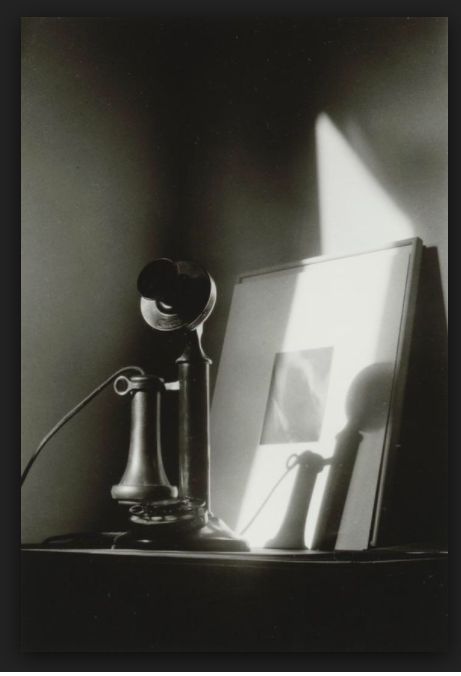Mere-Ubu.com
Art, History, 'Pataphysics, etc
exhibitionism
Following is a selection of exhibitions curated by Beth E. Wilson, with attachments to catalogue essays written to accompany them.
Maggie Sherwood, Untitled (The Boat), n.d. Collection of the Floating Foundation of Photography
Taking a different tack: Maggie Sherwood and the Floating Foundation of Photography
January 24 - April 8, 2009
Chandler and North Galleries
Samuel Dorsky Museum of Art, SUNY New Paltz
Photographer Maggie Sherwood’s circle included notables such as W. Eugene Smith, Lisette Model, Arthur Tress, Lilo Raymond, and David Vestal. In 1969 she impulsively bought a houseboat, and renovated it to include a space where she could stage photography shows—there were very few other places that “art photography” could be seen on a regular basis at the time—founding a regular program of group shows that began to receive significant critical attention. Her son, Steven Schoen, soon thereafter began a series of innovative educational programs, teaching photography to inmates in prisons, mental institutions, and other out-of-the-ordinary locations. Over time, the big ideas hatched on this little houseboat metamorphosed into the Floating Foundation of Photography, which continues its work today.
As a medium, photography opens onto an enormous range of possible applications and meanings, as these emerge through various contexts—none of which have seemed out of bounds for Sherwood and the aptly named Floating Foundation. The exhibition features a selection of work from the Foundation’s collections, including prints by distinguished artists like Smith, Model, James van der Zee, Eva Rubenstein, and others, alongside Sherwood’s own work and outstanding examples of the work produced in its programs.
The Camera always lies: CPW Regional triennial 2008
June 14 – August 17, 2008
Center For Photography at Woodstock
The Camera Always Lies takes as its starting point a contrary idea: that despite its apparent directness, photography (like all forms of representation) collapses reality in ways that inevitably shape our experience of the world as it is perceived through that medium—and beyond it, as well. Perhaps the verb ‘lies’ is a bit extreme. I will admit to using it in the title of the exhibition as something of a provocation, calling into question what might be considered the assumed role of photography as a producer of objective documents. This is not a question that has only recently arisen with the emergence of the digital format — from its very inception, the camera has functioned to make a picture of the world, which is something very different from the total (re)creation of one. A “mirror with a memory,” the photographic image insinuates itself between us and the place and time in which it was made, a technology (and a displacement) that enables the wide array of strategies displayed by the artists in this show.
While the exhibition focuses on artists working within the region, it should immediately become clear that there is no longer such a thing as a purely regional set of photographic and/or aesthetic concerns. Given today’s extremely efficient, globalized networks of information and transportation, it would be futile to attempt to identify a particular Hudson Valley aesthetic issue or (in the 19th century sense) a stylistic school within the region. Despite the wide variety of aesthetics and approaches included in the show, however, all of the artists selected for this Triennial are united in the sense that nothing seen here is as it initially appears. By bending perception through the selective deployment of strategies such as framing, focus, and shifts in scale or perspective, the viewer is challenged to make sense of the results. It is my hope that these ‘lies,’ taken together, will help to reveal a larger truth about who and what we are now, in a world that is so fundamentally altered and constructed by the photographic image.
John Dugdale, “Ascension”, 2005, edition 3 of 12, albumen print, 18 x 22”
Dorothy Norman, Telephone, In Front of Alfred Stieglitz "Equivalent" at An American Place, New York, c. 1940, gelatin silver print, Gift of Howard Greenberg, 2003.053.40
The Material Image: Surface and substance in Photography
June 8 – August 7, 2005
Morgan Anderson Gallery, Howard Greenberg Family Gallery and Sara Bedrick Gallery
Samuel Dorsky Museum of Art, SUNY New Paltz
Most of us spend more time looking through photographs than looking at them. This engaging exhibition, The Material Image: Surface and Substance in Photography, seeks to quiet the instrumental and/or narrative impulse that underscores the making and consumption of most photographs. Through a comprehensive survey of photographic processes primarily drawn from the SDMA permanent collection 'from cyanotype and daguerreotype to platinum and gelatin silver' some hand-tinted, others solarized, still others classic 'straight' images—visitors to the exhibition will be challenged to reflect on the physical nature of the medium and the specific visual and formal effects that have historically been enabled by these photographic processes, with an eye toward the way emerging digital technologies are changing the way we comprehend traditional analogue, emulsion-based works.


